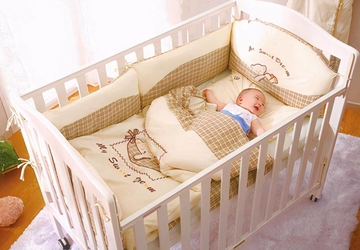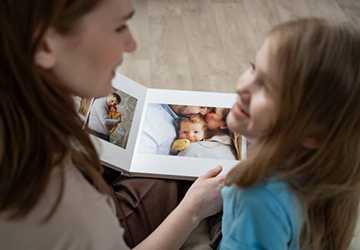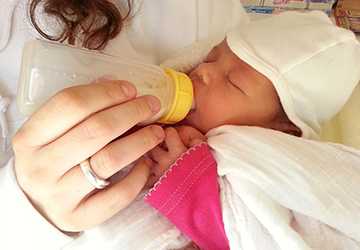How to Help Your Infant Transition to a Regular Bed
Embarking on the journey of parenthood is an extraordinary experience filled with countless firsts, from that warm first smile to those unforgettable first steps. During these precious moments, a crucial transition occurs that represents an important milestone in your child's development - the move from the comfort of a crib to an adult bed. While this transition is an exciting step toward independence, it often creates challenges for parents and children.
Timing is everything: milestones in development
Choosing the right time to move your child to a regular bed is a developmental success. Pediatricians typically recommend starting this transition between 18 months and 3 years of age. During this time, your child may improve basic motor and cognitive skills, providing a strong foundation for a safe and successful transition. Pay close attention to your child's behavior—if he or she has mastered the art of escaping the crib or is curious about a "big kid" bed, these clues may be a sign that the time is ripe for change.

Familiarity is Key: Creating a Comfortable Sanctuary
Introducing the concept of a regular bed means more than just replacing the crib. Place your new bed in the same familiar location as your crib to create a cozy cocoon. Consistency is key and will give your child a sense of continuity in their sleep environment. Add warmth to the room with your favorite bedding, a favorite stuffed animal, and a cozy blanket. This familiarity can serve as a powerful antidote to the anxiety that often accompanies change, allowing your child to feel safe in their new sleep paradise.
Let them choose: Increase independence
Empower your children by turning transitions into collaborative efforts. Involve them in decision-making and allow them to take the initiative in some aspects. Choosing bedding or comforters featuring popular characters or favorite colors can bring a sense of belonging and excitement. This newfound responsibility transforms a potentially daunting change into exciting adventure, positivity, and excitement about impending "big kid" status.
Gradual adjustments: a step-by-step approach
Rome wasn't built in a day, and your child's transition to a regular bed shouldn't be rushed. Take a step-by-step approach and gradually introduce your child to a new sleeping area. Before making the bed her primary sleeping spot, consider letting her sleep or play in it. This gradual immersion helps your child adjust to the change without overwhelming them, making the transition a smoother, more manageable experience.
Safety first: Strengthen sleep protection areas
As your child takes the step toward independence, it's crucial to keep them safe. Installing bed rails is an important protection against accidental falls at night and provides a safe sleeping environment for your child. Extend safety measures to the entire room by identifying and eliminating potential hazards. Also, secure furniture to the wall to minimize the risk of tipping over. These proactive safety measures keep your child safe and comfortable in their new sleeping space, giving you added peace of mind.
Set a bedtime routine: Get more rest
As you introduce your child to their new bed, think about the power of a calming bedtime routine. Consistency is key; this is a gentle signal to your child that it's time to move on from the day's adventures to the rest of the evening. Engage in activities that promote a sense of calm, such as reading a favorite story, singing a lullaby, or participating in a quiet, calming activity. Not only will this routine help you fall asleep peacefully, it will also help your child associate their new sleep environment with safety and relaxation.
Stay Patient and Positive: Riding the Waves of Change
Patience will be your most valuable ally as your child takes his first steps into the crib world. Initial resistance is completely normal. Expect a few nights of adjustment, and understand that this change, no matter how positive, may create a level of uncertainty for your child. Be a beacon of positivity in these moments. Offer words of encouragement, enthusiastically praise their courage, and use positive reinforcement strategies.
Be Prepared for Setbacks: Weathering the Night's Storm
Transitions often come with setbacks, and the transition to a regular bed is no exception. If your once deep sleep is disturbed during the night, approach the situation with a lot of patience. Comfort and calm your child during these times. Changes in daily life may temporarily upset them, but with your unwavering support and persistence, they may regain their balance over time.

Communication is crucial: building bridges of understanding
Even if your child still masters the art of conversation, it's important to communicate upcoming changes. Use simple language and age-appropriate explanations to help them understand what's in front of them. Talking to your children about this transition will not only give them a sense of understanding but also reduce the fear associated with the unknown. This open dialogue acts as a bridge, making the transition easier and promoting trust between you and your child.
Celebrate Milestones: Promote a Positive Transition Experience
Milestones mark every journey, and the transition to a regular bed is no exception. Embrace and celebrate these moments, big and small. Whether it's your first night in a new bed or a week without nighttime distractions, celebrate these achievements with enthusiasm. Positive reinforcement makes this transition an enjoyable experience for you and your child. By celebrating their successes, you create a positive atmosphere that reinforces the idea that this new sleeping spot is more than just a bed, but a personal victory for your growing explorer.
Conclusion
Transitioning from a crib to a bed is an important step in your child's journey to independence. With careful planning, a little creativity, and plenty of patience, you can help your child embrace this change with confidence and enthusiasm. Remember, every child is unique and what works for one child may not work for another. Pay attention to your child's needs, provide him with comprehensive support, and enjoy watching him grow.





